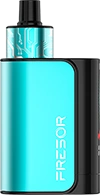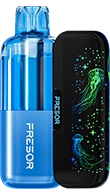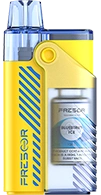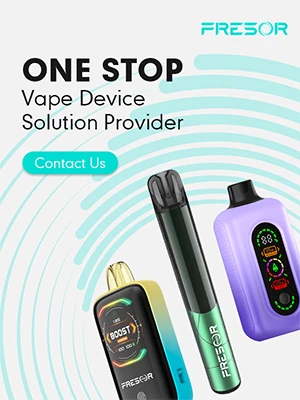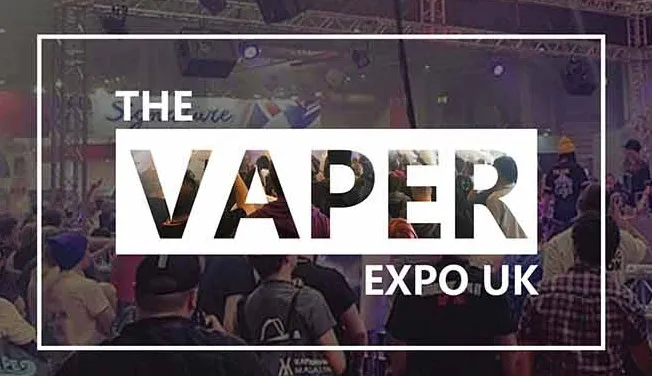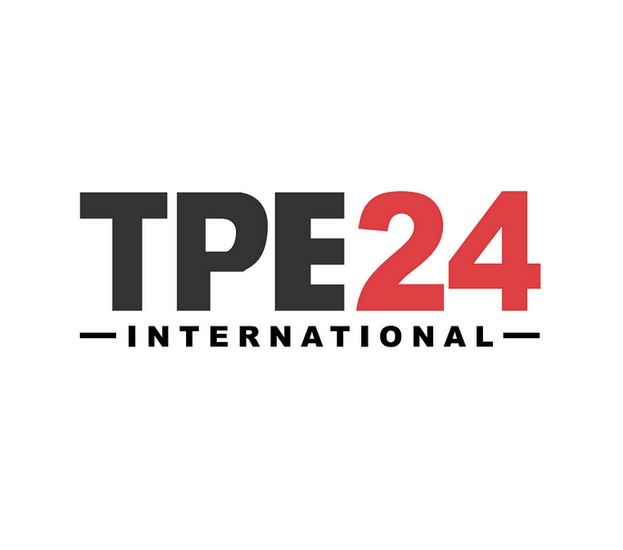Vape and E-Cigarette Marketing Tactics in the US in 2023

18 August 2023
Introduction
The vape and e-cigarette industry in the United States has experienced rapid growth and significant shifts in consumer preferences. As smoking alternatives, these products have gained popularity among various age groups, sparking both fascination and concerns. This article delves into the marketing tactics employed by vape and e-cigarette companies, exploring their strategies, target audiences, regulatory challenges, and the broader public health implications.

Historical Context of Vape and E-Cigarette Industry Growth
- Emergence of vaping and e-cigarettes
Vaping emerged as a groundbreaking alternative to traditional tobacco products in the early 2000s. Pioneered by inventors seeking smokeless nicotine delivery, the concept gained traction with the development of the first commercially successful e-cigarette by Chinese pharmacist Hon Lik. This novel approach sparked interest both as a potential harm reduction tool for smokers and as a disruptive innovation.
- Rapid Popularity Across Demographics
Originally positioned for smoking cessation, e-cigarettes quickly transcended their intended audience. Initially embraced by adult smokers seeking an alternative, vaping's allure expanded to young adults. Attractive designs, varied flavors, and reduced odor contributed to its widespread appeal, drawing in a diverse range of users.
- Health Concerns and Regulatory Action
The popularity of vaping was paralleled by rising health concerns. Regulatory bodies, including the FDA and various states, responded with measures to curb youth access and restrict flavored products. As health and regulatory concerns continue to shape the industry, ongoing debates seek to strike a balance between harm reduction and safeguarding public health.
Target Audience and Segmentation

- Key Target Audiences
The vape and e-cigarette industry strategically caters to distinct target audiences, including youth, current smokers, and non-smokers. Each demographic presents unique opportunities and challenges, shaping the industry's marketing strategies.
- Psychographic and Demographic Segmentation
Companies employ psychographic and demographic segmentation to refine their marketing approaches. Psychographically, they identify lifestyle preferences, values, and behaviors that resonate with potential users. Demographically, factors such as age, gender, and socioeconomic status influence product positioning and messaging.
- Impact on Marketing Tactics
The diversity of target audiences necessitates adaptable marketing tactics. Youth-focused campaigns emphasize flavors, aesthetics, and social appeal to attract younger consumers. For smokers, harm reduction messaging emphasizes alternatives to traditional cigarettes. Non-smokers may be targeted with health-conscious messaging or convenience-driven promotions. Understanding these nuances is crucial in tailoring effective marketing strategies while navigating ethical considerations and potential regulatory restrictions.
Influencer and Social Media Marketing
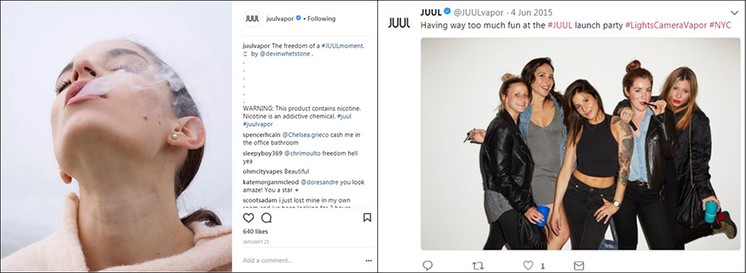
In the vape and e-cigarette industry, influencer and social media marketing are pivotal in shaping consumer perceptions and driving product adoption.
- Leveraging Influencers
Companies strategically partner with social media influencers whose identity resonates with their target audience. These influencers craft engaging content that seamlessly integrates vaping products into relatable contexts. By doing so, they effectively promote these products to their followers, leveraging their credibility and reach.
- Role of Social Media
Popular platforms such as Instagram, YouTube, and TikTok serve as crucial channels for engaging with consumers. Visual content, user testimonials, and educational videos become vehicles through which brands directly convey their messaging to a receptive and engaged audience. This direct interaction allows for personalized connection and effective communication.
Flavor and Product Innovation
- Flavors' Allure, Especially Among Youth
The allure of flavors, particularly among youth, shapes the appeal of vaping products. An expansive array of enticing options, ranging from fruity to dessert-inspired, exerts a captivating influence on consumers, especially among younger demographics. The sensory experience offered by diverse flavors contributes to the widespread attraction to vaping.
- Advancing Devices and Liquids
Continuous innovation remains a defining characteristic of the vape and e-cigarette landscape. Manufacturers consistently introduce cutting-edge devices and a diverse array of e-liquid flavors to the market. Technological advancements elevate user satisfaction by providing customizable settings, extended battery life, and enhanced vapor production. This ongoing evolution highlights the industry's commitment to improving the vaping experience.
Promotion and Sponsorship Events
- Engaging in Events and Promotions
Participation in events, festivals, and promotions stands as a cornerstone of vape and e-cigarette marketing. Brands seize these opportunities to spotlight their products, interact with consumers, and cultivate a sense of community within the vaping culture. These events serve as platforms for product demonstrations, engagement, and gathering feedback directly from users.
- Sponsorship of Music, Sports, and Cultural Events
The sponsorship of music, sports, and cultural events serves as a powerful avenue for amplifying brand visibility and engagement. Aligning with popular events enables companies to forge personal and emotional connections with their target audience, effectively integrating vaping into various lifestyle contexts. However, this alignment raises questions about the ethical implications of associating vaping with health and well-being.
- Ethical Considerations and Lifestyle Association
The alignment of vaping with healthy lifestyles and values presents ethical quandaries. While sponsoring events promoting active living and positivity may appear congruent, it can inadvertently communicate a misleading message, given the ongoing discourse about vaping's health implications. Navigating these ethical considerations is paramount to ensuring responsible marketing practices and upholding consumer trust.
Online and Retail Presence
- Online Platforms: Sales Channels
Online platforms play a pivotal role as sales channels for vape and e-cigarettes, providing convenience and accessibility to a wide audience. However, their usage raises concerns about proper age verification and the potential exposure of youth to these products. The challenge lies in striking a balance between reaching adult consumers and preventing underage access.
- Retail Store Locations: Youth Access
The location of retail stores holds significant influence over youth access to vaping products. Proximity to schools and residential areas can inadvertently expose minors to these products, impacting their perceptions and purchase decisions. Careful consideration of store placement is crucial to minimizing youth exposure and promoting responsible marketing.
- Regulatory Measures: Sales and Displays
Regulations are being implemented to address youth access and marketing practices in both online and retail settings. Stricter age verification processes for online sales and limitations on product displays in physical stores aim to curb underage access and discourage appealing presentations that may attract minors..
Messaging and Advertising Strategies
- Comparative health claims vs. smoking
Marketing often portrays vaping as a potentially less harmful alternative to smoking. Comparative health claims have ignited debates about their accuracy and the broader public health implications. While some view vaping as a harm reduction tool, others argue that uncertainties and long-term effects warrant caution.
- Appeals to individualism, freedom, and lifestyle
Appeals to individualism, freedom, and lifestyle elevate vaping to more than a nicotine delivery method. By positioning vaping as a trendy and personalized choice, advertisers shape consumer identity and preferences. This messaging fosters a sense of empowerment and self-expression among users.
The Current State of the US E-Cigarette Market
As of the present day, the US e-cigarette market continues to evolve amid a backdrop of changing regulations, shifting consumer preferences, and heightened public health awareness. Vape and e-cigarette companies face a dynamic landscape shaped by ongoing debates on youth access, advertising restrictions, and long-term health consequences. Striking a delicate balance between catering to adult smokers seeking cessation tools and preventing youth initiation remains a central challenge. As regulations continue to adapt, the industry's marketing tactics and strategies are undergoing transformation, underscoring the need for vigilant oversight and responsible practices to ensure a healthier and more informed vaping landscape.
Final Thoughts
Throughout this examination, it becomes evident that vape and e-cigarette marketing strategies wield significant power in influencing consumer behaviors, perceptions, and even public health outcomes. The allure of flavors, the appeal of individualism, and the portrayal of comparative health claims all contribute to a dynamic ecosystem that both attracts and raises concerns.
As the industry continues to evolve, responsible marketing practices, comprehensive health education, and continued regulatory vigilance are essential to guide the future of vape and e-cigarette marketing in a manner that prioritizes consumer well-being, ethical considerations, and a healthier society. The path forward requires a collective commitment to transparency, accountability, and the broader goal of fostering a balanced and informed vaping landscape.
Frequently Asked Questions (FAQs)
Q1. What is the legal age for purchasing e-cigarettes in the US?
The legal age to purchase e-cigarettes is 21 in most states, following the federal Tobacco 21 law.
Q2. Can e-cigarettes help smokers quit traditional cigarettes?
E-cigarettes are marketed as smoking cessation tools, but their efficacy varies among individuals. Consultation with a healthcare professional is advisable for those seeking to quit smoking.
Q3. What are the concerns about flavored e-cigarettes?
Flavored e-cigarettes have faced criticism for attracting youth and potentially leading to addiction. Some argue that appealing flavors contribute to the rise in youth vaping.
Q4. How do e-cigarette companies target specific demographics?
E-cigarette companies use various tactics, such as social media influencers, to reach target audiences. Flavors and lifestyle marketing resonate with different demographics.
Q5. What are the penalties for violating e-cigarette marketing regulations?
Violations of e-cigarette marketing regulations can result in fines, warning letters, or restrictions on product sales. Regulatory agencies monitor and enforce these rules.
Improve Your Vape Brand with TOP Vape OEM/ODM Manufacturer
ALD Vapor, a global leader in vaping industry, is professional in providing one-stop OEM/ODM atomization solutions for vape brands from all over the world since 2009. With over 14 years of experience, over 4000 workers, and 6 factory sites, the company has gained a great reputation among clients and a fast-growing market share.

